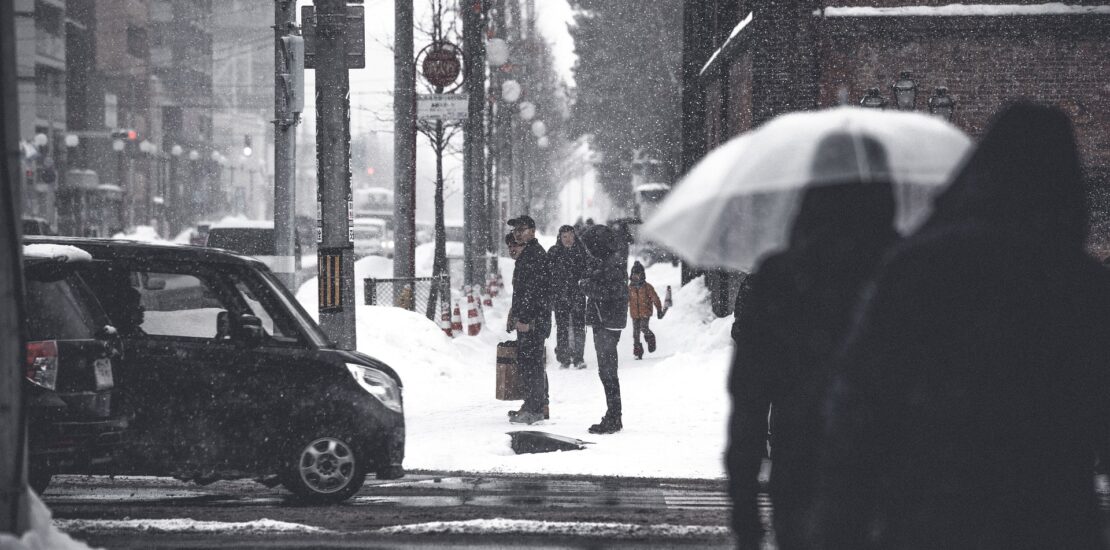HeatTech and hand warmers aren’t the only ways to combat the colder weather in Japan. Make sure you’ve read this survival guide to prepare yourself for the chilly winter ahead!

Prepare for the Colder Weather with these Tips and Tools
Sure, HeatTech is probably the first thing recommended once the weather starts cooling down. Even with that additional blanket and extra 700 yen layer (you know you got the cheaper one), you may find yourself waking up to shivers rather than your morning alarm. These base layers are popular for a reason, all the same, there are so many other options available to help combat colder weather as well as fight the onslaught of the dreaded seasonal cold! Read on for my best tricks, trips, and tools to make sure your winter is the warmest and most comfortable yet.
Keep Warm with these Other Cozy Inner & Loungewear Alternatives

If you haven’t already found your way to Uniqlo and perused the HeatTech selection, by all means, please do. I am in no way deterring you away from them, but there is a high chance you already have some in your winter arsenal. Most of the items I’ll recommend going forward will be even more effective if using HeatTech as a base layer anyways.
Fellow couch potatoes, it may be time to throw your snuggie aside and give fleece loungewear a shot. Most of these fluffy fleece PJs or “room wear” are made from polyester, which is best for keeping warm and dry with its moisture-wicking benefits. As the weather beings to get cooler, you’ll soon see these fluffy lifesavers in stores all over Japan. I recommend GU as a budget-friendly option if you’re a first-time wearer. Their online store goes up to 3XL and has an assortment of styles to try. If in the market for something bougie, check out Gelato Pique for premium fluffy pajamas.
Another thing to consider when purchasing winter apparel is to pay close attention to the material type. For example, wool, although a bit more expensive, will last you longer than other fibers and keep you warmer as well. However, if it’s not a quality fiber, you may find the lower-priced alternative to be a bit more irritating on the skin. I usually like to buy accessories like socks, hats, and scarves in higher-quality wool or cashmere, especially since the head, neck, and feet are more sensitive to cold weather.
Prepare your Home Accordingly

Even the warmest wardrobe cannot fully protect you if your home isn’t winter-ready. One of the first things I do once the temperature drops is set up my heated blanket. If you’re using a thin heated blanket, my best tip is to tuck it between your mattress and fitted sheet, this way you won’t be adjusting it frequently on cold nights. I always like to turn my blanket on 30 minutes or so before bedtime so my futon is warm and toasty.
Another item that makes a difference in keeping your home comfortable, is investing in a humidifier. According to Medical News Today, humidifiers can help with “dry skin, coughs, dry throat, sinuses, preventing snoring, and even preventing influenza” (source). However, if not cleaned properly, humidifiers can worsen your health! I like to refer to this guide from Mayo Clinic on humidifiers to make sure I’m utilizing mine in the best way possible.
Keep Your Medicine Cabinet Stocked

Catching a seasonal cold tends to be unexpected and often happens at the worst time possible. Have a weekend trip booked or a special date you’ve been looking forward to? Think again!
Even a minor cold can set back the healthiest individuals for weeks if not properly treated.
I’ve found that the best way to be prepared, even before catching a cold, is to stock my medicine cabinet each year with my favorite over-the-counter cold medicines and cold prevention goodies.
I’m not going to lie, sourcing the best over-the-counter medicine that helped with my yearly cold symptoms has been a challenge. My best advice is to ask your Japanese friends or co-workers what medicine they like for certain symptoms before going to the drug store and picking up something random. The two that I’ve been recommended and have gone back to time and time again, are either ルルアタックEX (Lulu Attack) or Stona (for more sinus-related symptoms). Other items to keep on hand are these cooling sheets for your forehead, which are especially useful when a fever hits. Additional goods to keep in the house that help with hydration are vitamin and sports drinks, like Pokari Sweat or Aquarius.
As a precaution, make sure to read the over-the-counter medicine instructions and check with your general practitioner or pharmacist before taking anything new, especially if you are taking other medications simultaneously. Additionally, If you’re suffering from a high fever, head to the doctor pronto!
Get your Nabe On

Nabe, or nabemoto, is the ultimate winter comfort meal and my go-to dinner in the late months of winter. Nabemono is a brothy dish filled with nutrient-dense veggies, tofu, noodles, and meat. If you haven’t gotten yourself a donabe (土鍋), or earthenware pot, it’s time to go shopping!
Don’t let those tiny cute individual pots trap you! Sure, Francfranc has the cutest little personal hot pots on the market, but are you getting all you need in that one-person portion? I did the thing, bought the tiny pot, and then realized that even a single portion pre-packed bag of vegetables wouldn’t fit in my adorable Hello Kitty pot.
Opt to buy a medium or large nabe at your local homeware store. This earthenware pot doesn’t have to be used just for winter either, I often use mine for making other dishes including nikujaga and sukiyaki. My favorite resource, Just One Cookbook is a great place to learn more about nabemono and other delicious Japanese recipes. Furthermore, consider reading this article on what types of foods are commonly eaten in winter for even more insightful information!



